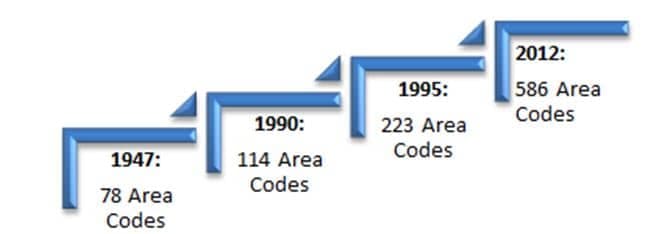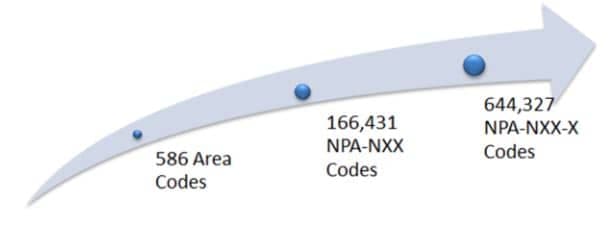Number pooling
Partitioning of NPA-NXX blocks, also known as number pooling, dramatically increased the supply of new numbers for expanding carriers. Learn all about it in this paper.
What is number pooling?
Area Codes were first established in 1947 with a total of seventy-eight area codes nationwide. Over the next 43 years, only 36 area codes were added. In the 1990s, the growth in wireless services drove the addition of 109 new area codes so new blocks of 10,000 numbers could be issued to carriers. These number blocks refer to the first six digits of a telephone number, or NPA-NXX where NPA is the area code and NXX is the switch code.

Faced with a dwindling supply of telephone numbers for new carriers to issue to their subscribers, the FCC in 2000 ordered that NPA-NXX number blocks be partitioned into 1000 blocks (NPA-NXX-X) to increase the supply of new numbers for carriers.

While this expansion was necessary, seven digit routing is more complicated than routing on six digit NPA-NXX blocks. In the Local Exchange Routing Guide (LERG) there are 166,431 six digit NPA-NXX dial codes. In contrast, there are 644,327 dial codes when routing based on seven digit one thousand blocks.

In telephone routing tables, a dial code matched with a destination (IP address or trunk group) is called a translation. Most least cost routing tables have an average of three destinations per dial code. This means that a basic optimized least cost routing tables for domestic US routing can have more than one and half million translations. Some TransNexus customers have 50 million translations in their routing table.
Because of the challenges presented by number pooling and seven digit routing, service providers must have a least cost routing solution that is capable of holding a very large amount of translations in the routing table. This ensures the correct and most cost effective route will be used for every call.